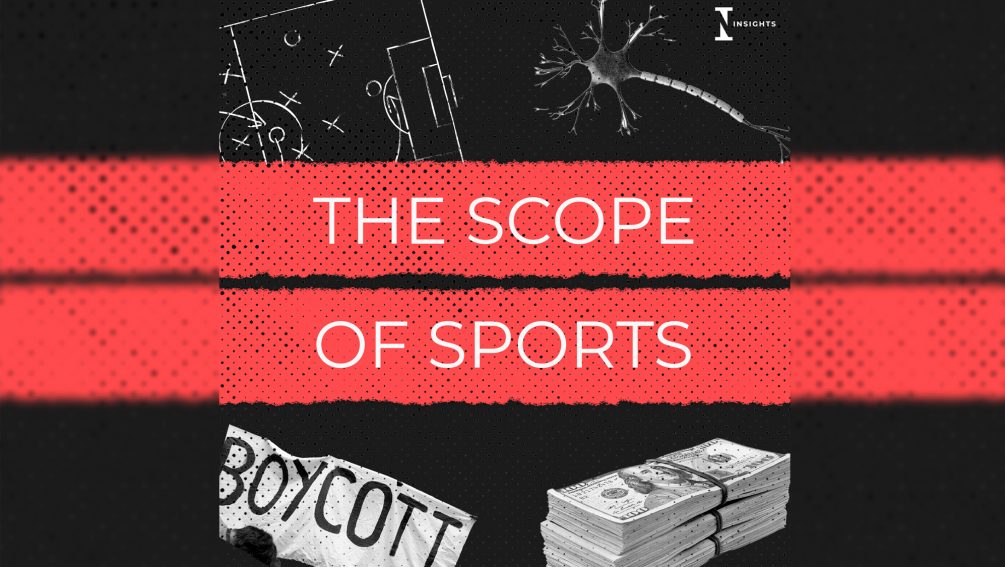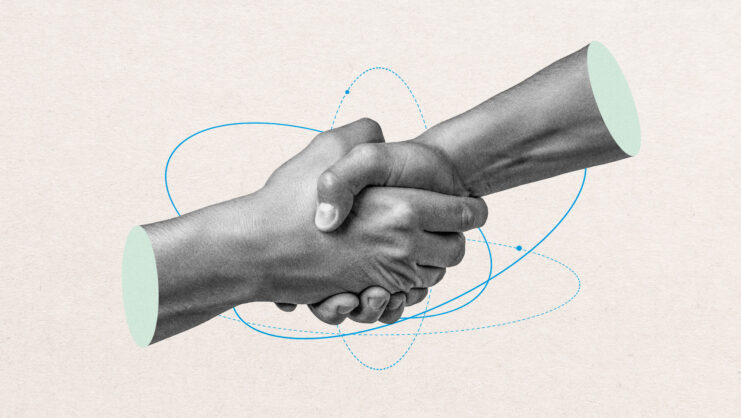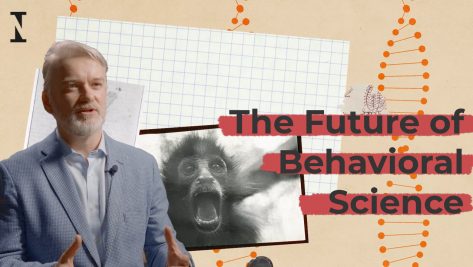Scope of Sports Ep 4: Sports and Our Brains

Sports are – before all else – physical activities which require control of how our brains interact with our bodies.
In this episode, we speak to Susanna Harkonen, an expert in neuropsychology and mental health, to explore how athletes’ nervous systems affect their performance and how neuropsychology can be used to improve outcomes in general.
© IE Insights.
Transcription
Alex Cope: Sports are – before all else – physical activities which require control of how our brains interact with our bodies. This relationship between brain and body is something neuropsychologists seek to study and improve. Hi, today we’re speaking to Susanna Harkonen, an expert in neuropsychology and mental health, to explore how athletes’ nervous systems affect their performance and how neuropsychology can be used to improve outcomes in general.
Hi, Susanna. How are you?
Susanna Harkonen: Hi. Nice to be here.
AC: Good. It’s great to have you here. So we often talk about mentality in sports, but this suggests that something that comes from our brains or our thoughts process. Your work focuses more on the importance of neuropsychology in performance. So, could you tell us what we actually mean when we talk about the nervous system and neuropsychology?
SH: Yes. When it comes to nervous system, I work with what’s called the polyvagal theory. And the polyvagal theory is the science of safety. Basically, brain-body science. So instead of focusing on the mind and the mindset and how athletes can within the mind improve the performance -it’s one piece of it – but actually it’s way more important to come from the body because your bodily states actually have a huge impact on your performance. And if when you learn to harness those bodily states, you can actually perform better, whether you’re an athlete or an ordinary person or just anybody in a stressful situation.
So this is what’s really, really fascinating. And your mind is only 5% of your awareness. And 95 is in the body. So it says quite a lot.
AC: And with this focus on safety. So it’s I guess it’s the nervous system almost detecting threats. But when we think of safety, I kind of think of physical safety. Is that what we’re talking about, only physical threats or danger or is it a broader sense of insecurity?
SH: It’s a much broader sense of insecurity. Absolutely. And then from a psychological, from a nervous system perspective, not psychological perspective alone safety, we as human beings we detect safety and threat all the time. So while we’re sitting here in this space, we are detecting safety and threats, and athletes in particular are detecting safety and threat because competition is threat, competition is not safe.
Somebody is going to win. Somebody is going to lose. So it puts them on the edge. The famous fight and flight reaction. So therefore, when we speak about safety, we are speaking about different states and how we perceive our world and the cues that are coming from inside of our bodies and outside of ourselves. Could be, for example, a coach that’s highly antagonistic and wants to push the athlete over the edge, that is a threat.
AC: And these are these threats that appear at all levels of sport, right? Yes. Not just for elite athletes.
SH: No, they and yes, it’s daily life, actually. Even being a university student has its safety threats. It is an ongoing process. And we’re constantly scanning that.
AC: And with these threats, what are the kind of responses nervous system generates when it detects a certain threat?
SH: The first one is often we go into the survival mode, the fight and flight. So that means that we are hyper vigilant, you know, adrenaline is going on and the muscles are getting ready to either run or to fight. So very basic nervous system reactions. The good part about this is that we still think that we can do something about it.
So it’s a choice. We can fight or we can run or we can, you know. But then when it overwhelms and becomes too much, then we become we go into that state. Actually, it’s easiest to explain by traffic lights, you know, when we are chilling and we’re good and all is nice and we’re connected with others. It’s green.
The survival state is the yellow lights. And then we go into the red light where we no longer can do something. So we become paralyzed. And this is the state of despair. So with athletes who are not winning, for example, you can go into that state of despair and you no longer have the ability to really fight and win, for example, in a game.
AC: And we see this sometimes with elite athletes who suddenly lose their powers almost got into this state of freezing or the yips where they can’t seem to repeat the actions that they’ve done all their lives.
SH: That’s exactly it. Yes. And one brilliant example of this is like, for example, Roger Federer, who has been amazing at coming back from that stage being on the losing end and then coming back, bouncing back. So he has that ability to regulate his nervous system states and then bring himself back to that yellow zone where you have the adrenaline and where you have the will to fight.
Roger Federer; “It’s all mental. It’s just you have to go out there and believe that point for point, whatever happens is enough. Nothing’s going to change. I just got to believe and keep coming at Rafa. And then if he’s too good, that’s too good. You know, But I’m not going to get down on myself. And it was easy to tell myself, just you have nothing to lose.
Roger. Like I said on the court, it’s okay to lose.”
AC: And what are some of the techniques athletes can use to try and get themselves out of that red zone and down into the yellow zone? Are there certain techniques they can do in training is it about thought processes or repetition of action?
SH: There are multiple things that the athletes can do. And one of the basic ones, of course, is to have of course, it starts with a mindset, but the more important one here with the nervous system one, is to understand what state are you in, what’s zone are you in? And take consequence actions, also to understand we may misread the cues of safety and threats.
That’s where it gets really interesting because we’re not rational beings. So sometimes something that’s not threatening, we may find it threatening and therefore when we start to work, when we learn to engage with these processes, it’s easier for us to say “Hey, I am in this, I’m in this state where I can bring myself back.”
So it can be a breathing exercise, it can be a visualization, it can be some cues of safety. It can be even touching something. You know, there are multiple things depending on the athlete or depending on the person that bring them to safety. It can be three short breaths. And again, you know, this is really something that you learn to do.
I have a colleague in the US called Michael Allison, who’s working with high-end athletes, a sports coach, and he’s a real expert in tailoring these things to every single individual.
AC: And so I guess it depends exactly on how each athlete detects threat, what their responses will be. And why do we sometimes misinterpret threats? Is it because our nervous system is so old and it’s almost like an ancient detection system? Or is it to do with the relationship between our brain and our body and our nervous system?
SH: Our nervous system is ancient. We’re still like in the savannas. Also many people have a skewed nervous system these days. So instead of being safe and calm, we don’t have the safety from the beginning. So we may interpret something that’s actually safe as unsafe. There are people who have never been in that safe zone in their entire lives because they’re constantly in the fight and flight.
And it’s really one of the reasons why we live in today’s disconnected world, is this lack of nervous system safety. We need other people and this connection to feel safe.
AC: And for something like athletes’ performance, is the optimal idea to always be in that fight or flight zone with kind of increased physical capability. Or is it to be Zen and calm in the Green Zone or to just have a mixture?
SH: That’s a nice really good question. The idea is not to be all the time, of course, in the survival mode or in the yellow zone, because frankly, we can’t I mean, it’s very taxing. But unfortunately, this is something that happens to a lot of athletes. It’s the way athletics is run and coaching is done is to get people really going and sometimes very aggressive and then they cannot relax back to the Green Zone, which is where you restore your body where you restore your muscles, where you restore everything and we need that.
So what happens to some of the top athletes or many actually, surprisingly many, is that they are permanently in a state of hyper vigilance and once when their careers are over, there are consequences to their mental health and physical health because they were never able to relax. So here we are looking not only at the top athletes, but just anybody is to have appropriate reactions, not stay Zen all the time when you need to, you know, you meet somebody on the street and they are a danger, a real physical danger, you do want to run outside, but you don’t want to be in that state permanently.
AC: And how can the average person in their day to day lives use these ideas of taking ourselves down from states of hypervigilance into calmer states? How can that be seen in our day to day lives? Is there something we can do if we’re in a state of hyper awareness or of hyper vigilance to calm ourselves down? That doesn’t require the training that athletes go through every day.
SH: Of course. And I’m a big fan of the polyvagal therapy because it has completely changed my personal life and it has completely changed the way I work in terms of mental health and wellbeing. All mental health issues are somehow linked to the nervous system dysregulation. So the more you learn about your nervous system and the more you learn about bringing yourself safety and the more you experience it, the better.
Experience is the key here because you cannot think yourself safe. Many people think that their minds are so very powerful, they’re not that powerful. So you it has more to do with learning how you respond to the cues of unsafety and how can you bring safety to yourself. And there are multiple ways, basically in trauma therapy, trauma is s closely linked to safety or unsafety for that matter.
In trauma therapy, you have three ways of doing that. You can either go from your body. So yoga, taichi, relaxation, massage, acupuncture, anything that has to do with the body and calming your body and your nervous system is really powerful. Then the second one is that you go from top down, which is the mind, and which is coaching therapy.
Mindfulness to some degree. All of those things that where you think yourself, you change your thoughts, your cognitive distortions and so on. And then the third one, which is a really wonderful one and I would highly recommend it to anybody, is the way you use the both sides of your brain. So it has more to do with nature, awe just being in awe, arts, music, it could be movies, it could be anything that really makes you makes you tick and makes you feel relaxed and happy.
AC: And what are some of the techniques – you said that can be difficult is seeing what state you’re in – what are some of the techniques we can use to see if we are in this yellow zone or the red zone or the green zone in our daily lives? Like we said with athletes, it can sometimes be easier if a repetitive action is becoming difficult, they’re probably entering the red zone. But in our daily lives, what are some of the techniques we can use to see where we are?
SH: When you are in a state of relaxation, you know it. So when we’re in the green zone, we don’t really have to think about it because that’s when we are feeling the flow. We’re good, we’re connecting with people, we’re having a good time. We don’t think about it. We just know we’re well. When you’re not in that state, you’re already either in the survival mode or in the in the disconnection mode.
When it comes to survival mode, you know, it’s the heart rate getting higher, constant thoughts. We cannot calm ourselves. We cannot calm our minds. And we are seeking for solutions in our minds, normally or with our bodies or we just want to exit the situation. When we go into disconnection in the red zone, that’s when we are in a state where we are not able to think straight, we may procrastinate.
We often procrastinate a lot. That’s probably one of the key, key features of this place. We can feel a little bit depressed and in the yellow zone it’s more anxiety in the red zone, it’s more depression. So there are some of these examples of how we can detect those.
AC: And it’s quite interesting because this state of disconnection, we often just think of it as a mental problem, that we’re having anxiety because of our mental well-being, nothing to do with our physical state or our bodies.
Phil Jackson: You know, as much as we pump iron and we run to build our strength up, we need to build our mental strength up. We need to build our mental strength so we can focus, get one pointed attention, and so that we can be in concert with one another in times of need.
AC: And touching back onto sports, that idea of it being a mental problem. We see a lot of sports psychologists, a lot of athletes using sports psychologist to try and improve their performance. But we hear less about sports and neuropsychology. Do you think it’s something that’s going to grow in the next 5 to 10 years? Athletes understanding more about the connection between their mind and their body and the nervous system.
SH: I mean, this is going to revolutionize the way we do sports. I firmly believe that if we have the podcast five years from now, we’ll see a very different world.
AC: With sports. So elite athletes really taking control over their nervous systems and befriending this.
SH: Yes. This could be applied to any field of performance. But I think the athletes who are really keen on performing well are the first ones to really embrace it globally. And it’s very promising. The results of this sports coaching with this kind of approach are very, very promising. And it’s just a matter of that taking up in as much as you know there were this couple of years ago there was visualization and the new things coming in so absolutely this is really going to change the way we do sports and also the way we manage people.
AC: And how can it be interpreted from that sports into management, into leadership, into the workplace, for example, is it the same ideas just using different techniques?
SH: Is it the same? The principles are the same because all human beings share the same principles. So the difference there is that in a manager, in a managerial role, it’s not individual performance so much. You are coaching, for example, a team, you’re leading a team. When you are in a state of calm yourself, you bring safety and calm to your team.
And when you understand your own nervous system states, you’ll be able to regulate them better. You can also handle performance much better. You can manage stress much better. So it’s really, as you can see, it’s really a foundational thing and it’s surprisingly unknown so far. But it’s really like I said, I’m absolutely convinced that it will come from the therapy world more towards the performance world, and it’s already happening at the moment.
AC: And is there more and more research being done or is it still in it’s kind of nascent stage?
SH: No, there’s plenty of research that has been done on the topic, and it’s just emerging from, like I said, it has been more used in the therapy context or the health context because that’s where it emerged originally. But now it’s really being expanded. And Dr. Stephen Porges, who was the founder, who developed the polyvagal theory is really behind this.
So there’s the Polyvagal Institute that’s doing a lot of good work and it’s really taking the world by storm.
AC: And what does it look like in a therapy environment, the use of this theory?
SH: I see this as a really powerful tool to take away the stigma. You were referring to that earlier. We often think that it’s in our minds, you know, our minds. There’s something wrong with our minds because we are anxious and we can’t get it together. Why can’t I control my depression? Why can’t I control my anxiety? Why can’t I control my binge eating, whatever that is?
You know, but when you understand that it’s actually a nervous system state and it doesn’t have anything to do with your thoughts, it takes away the stigma. And I see that over and over again. People just say, wow, it’s a wow. It’s a nervous system state and I can learn how to manage this. Nervous system states.
AC: It’s fascinating. Okay. Well, thanks a lot for being with us here today, Susanna.
SH: My pleasure.
AC: Thanks again to Susanna Harkonen, an expert in neuropsychology and mental health, giving those insights into polyvagal theory and how our bodies affect our brains.










